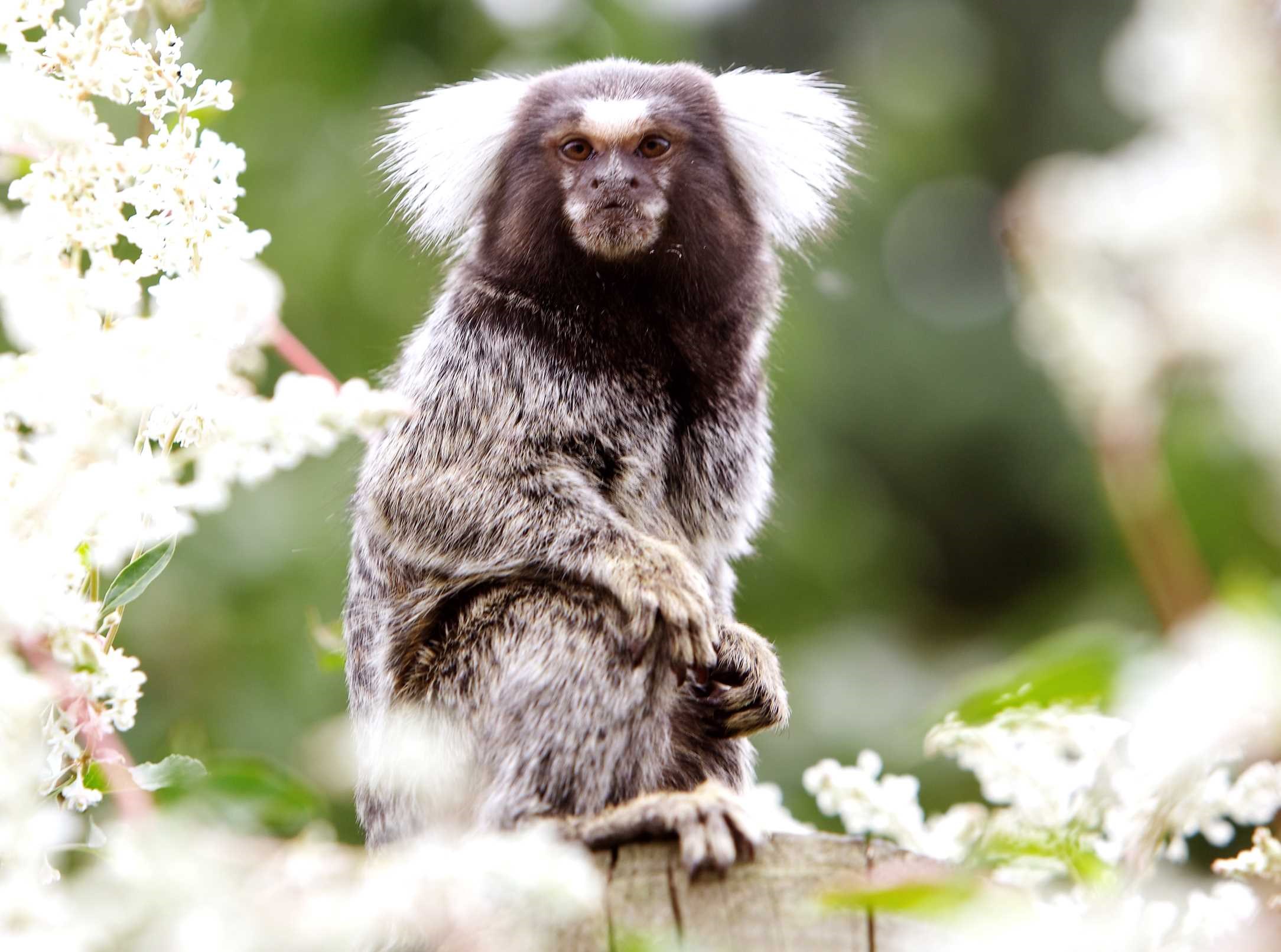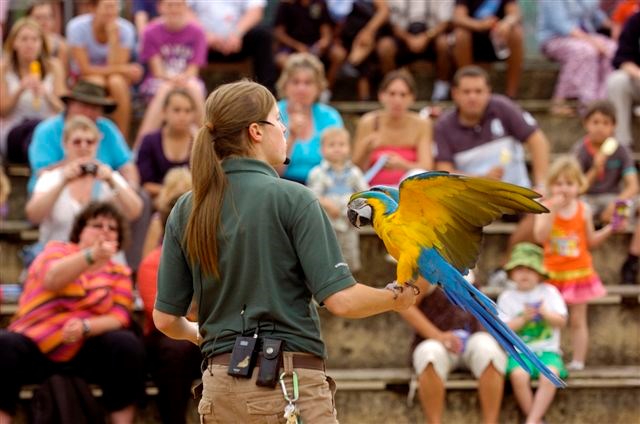
Overview
At Woburn Safari Park, the troop of marmosets have an enclosure called Marmotopia, with viewing platforms and outdoor enrichment, and they can often be seen showing off their acrobatic skills on the hanging rope!
They share their home with the Azara's agouti. These animals would live together in the wild, sharing the same rainforest habitat.

All about us
| Distribution: | North East Brazil |
|---|---|
| Habitat: | Scrub forests, edges of rainforests |
| Height: | Up to 210mm long |
| Weight: | 230-260g |
| Gestation Period: | 144 days |
| Lifespan: | 12 years (wild) or 16 years (captivity) |
| Threats: | Habitat destruction |
Scientific name: Callithrix jacchus
The common marmoset is one of the most commonly found callithrichid species kept in captivity. It is also one of the smallest species of monkey. Their name ‘marmoset’ comes from the French word ‘marmouset’ meaning ‘dwarf’, or ‘little’.

Common marmoset facts
The common marmoset has a body greyish brown in colour with light striping. The tail is over twice the length of the body, with distinct grey and white rings. The main features of the head are the large white tufts of fur around the ears, and white patch above the eyes, with the rest of the head grey in colour.
The head features a set of sharp teeth, specifically used to gnaw the bark of tree’s to produce the sap and gum which they feed on. The lower incisors the same size as their canines to allow them to chew through the bark.
Like all marmoset and tamarin species they have claw like nails, known as tegulae, on their fingers, and nails on their thumbs. This allows them to grip the bark of trees when climbing. Unlike a lot of primates they do not have opposable thumbs.
They have well developed scent glands, allowing them to mark territory and communicate via scent.
Male marmosets are dichromatic, or colour blind, making reds, greens, browns, and oranges all appear similar. The female can be dichromatic, but most are trichromatic, seeing colour the same way as most humans.
The common marmoset is an exudativore and insectivore. This means that their diet consists mainly of exudates, material that oozes out of a plant such as gum, sap, resin, and latex, and also insects. They spend around 20 to 70% of their time feeding on exudates, and around 20 to 30% feeding on insects. Their diet consists of these foods much more than any other marmoset or tamarin species, which means there is little competition for food.
The teeth of the common marmoset are specially adapted to this diet, with lower incisors the same size as their canines to allow them to chew the bark of trees to release exudates.
Their diet does also include fruit, seeds, flowers, fungi, nectar, snails, lizards, tree frogs, bird eggs, nestlings, and infant mammals.
They rely on good vision to find food, but also on their sense of smell to detect ripe and unripe fruit.
Common marmosets live in extended family groups of between three to twelve animals. This family group usually consists of one adult breeding pair and their offspring, but can also include two breeding males. The dominant adults will be the only members of the group to produce young; however the rest of the group will all help take care of the young. The group will forage for food together and sleep together, always with a sentry watching for predators.
The group will have a small territory of around five hectares which they defend; they will forage for food within this territory and use scent marking to define the borders. This territory is chosen based on the quantity of gum trees, with an average of no less than 50 gum trees per hectare. Within the territory are set sleeping trees, usually thick with vines and foliage for protection, which are used to sleep in regularly.
The group communicates with a range of calls, some of these calls are too high pitched for the human ear to hear as marmosets can hear higher frequencies than humans.
Scent is used to mark out territories, and to communicate, with each marking giving detailed information about the identity of the marker.
It was originally thought that marmoset groups would only have one breeding male and female, due to this happening in captivity, however recent studies have found that wild marmosets will more commonly have a group with one breeding female, mating with two males. The female will mate equally with both males. This is thought to happen to secure more parental care for the infants.
After a period of about 144 days the female will give birth to up to four young, although most commonly twins or triplets. Twins will typically weigh 40% of the mother’s body weight. They will be carried on the backs of both the mother, and the rest of the group, until they become independent, and then are weaned at around 40 to 120 days.
Adults will become sexually mature at around 18 to 24 months.
In the wild the common marmoset would have a large territory, or up to 5 hectares. To simulate this, our group of marmosets have the freedom to roam around the park. They have a central house, which they tend to spend most time nearly, but they will roam around the surrounding trees and nearby buildings.
In the wild marmosets will gnaw the bark of trees to release the gum and sap from them. We feed our marmosets a specialist diet, which contains a special marmoset gum, that we feed to them in special feeding logs with holes cut into them to simulate their natural feeding behaviour. They still have the opportunity to perform their natural bark chewing behaviours on the surrounding trees, which they do very evidently, leaving gnaw holes visible on most of the trees around their house.
Natural predators include a wide range of species. Due to their small size marmosets are vulnerable to predation from snakes, owls, raptors, cat species, and other carnivores. They do have specialised alarm calls for each type of predator, and will mob some predators to deter them.
The population of common marmosets is currently stable, with numbers decreasing slightly due to deforestation, and some capture for the pet trade, but not enough to classify them as a cause for concern.
There have been many introduced groups of common marmoset into other regions, flourishing, and sometimes displacing other native marmoset species.
Within the common marmosets native range there are twenty national parks and areas of protection, as well as one more within their introduced range.
They are one of the most commonly bred species in captivity, in zoos worldwide, but also for the pet trade, and for medical testing.
They are listed as appendix II of CITES, which means the trade and export of this species is heavily regulated and controlled to protect them.

book your visit now
Ready to start your safari adventure?

